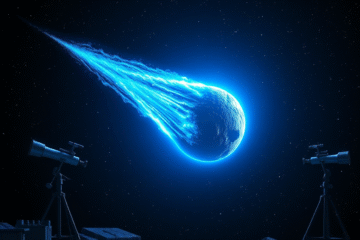Artemis II Responds to Geopolitical Pressures
Artemis Launch II, scheduled for February 5, 2026, marks a significant moment in space exploration.
This article will explore the complexities behind this date, including the geopolitical pressures of China's lunar program and the technical challenges NASA faces, such as issues related to the Orion spacecraft's heat shield.
Additionally, we will address how these factors impact the return to the lunar surface, demonstrating the importance of Artemis II in a new era of space exploration.
Artemis II Launch and Geopolitical Influences
Contemporary space exploration is deeply marked by geopolitical rivalries, and China's lunar program has become a crucial factor in this dynamic.
In response to this pressure, NASA decided to schedule the launch of Artemis II for February 5, 2026, demonstrating the urgency to regain the lead in the space race.
This decision not only marks a new step toward returning to the Moon, but also reflects growing tensions and the need to reaffirm America's presence in lunar exploration.
Orion Heat Shield Technical Challenges
During the reentry of the unmanned Artemis I mission in 2022, significant problems were identified on the heat shield of the Orion spacecraft.
This component, essential for protecting the capsule from extreme temperatures of up to 2,700 degrees Celsius, suffered unexpected damage, like the loss of carbonized material.
These technical challenges directly impacted the schedule of the Artemis program, resulting in the postponement of Artemis II.
The delay was inevitable as NASA engineers needed to thoroughly investigate the exact cause of the failures, as described in a NASA report.
This analysis allowed refinements in the techniques and materials used in the manufacture of the shield, ensuring greater safety for future manned missions.
During this process, the need to surpass China's lunar program also became a decisive factor for the postponement of the mission, which is rescheduled for February 2026, reflecting NASA's commitment to overcoming challenges and ensure protection of the lives of the astronauts who will participate in the journey.
Importance of Artemis II for Lunar Return
Artemis II is crucial for human return to the Moon, marking the transition between proof of concept and manned missions aimed at landing.
She validates Orion's capabilities in extreme environments, testing crucial systems on longer manned flights.
Scheduled for launch in 2026, this mission serves as a strategic precursor, setting the stage for the story of subsequent missions.
Furthermore, the Artemis II mission will be the first to take humans to the vicinity of the Moon since 1972, as highlighted by different specialized sources in the space area.
Technological advances developed for Artemis II reinforce not only the return, but also the future continuous presence on the lunar surface, essential for future human exploration.
This is intensified by the global commitment to establish a sustainable human presence on the Moon, in partnership with other nations and space agencies.
Artemis II Consolidated Schedule
After resolving technical issues with the Orion spacecraft's heat shield during the unmanned mission Artemis I, and considering geopolitical factors, NASA adjusted the Artemis II schedule.
This mission, remarkable for being the first manned mission since Apollo 17, is now scheduled for February 5, 2026. Geopolitical pressure exerted by China's lunar program has accelerated preparations, leading NASA to prioritize a return to the Moon.
Artemis II launch will build confidence through demonstration of Orion systems and the European Service Module.
It is estimated to take two weeks to fully test the spacecraft's functionality.
This mission is crucial to paving the way for future trips to the Moon and beyond, providing the data needed to fine-tune future Artemis missions.
| Date | Event |
|---|---|
| February 5, 2026 | Launch of Artemis II |
| Feb 2026 | Orion Systems Testing |
In conclusion, the launch of Artemis II represents not only a technical breakthrough, but also a strategic response to global dynamics.
The mission is a crucial step towards returning to the Moon, highlighting the continued relevance of space exploration.



0 Comments